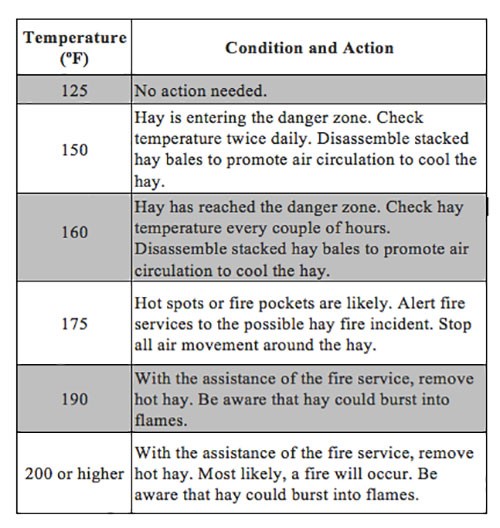Follow Us x
We produce and stock 5 different hay variations in 3 different sizes. In addition to alfalfa, you will also find fescue, orchard grass, bromegrass, timothy, teff, and rye grasses in the mix. We've tested 8 different fields so far this year averaging 9.74% NSC (Non-Structural Carbohydrates). If your horse needs to have a low sugar/low starch diet, the %NSC should be <12% on a dry matter basis. Download our test results for other nutrition details.
Alfalfa (90-100% alfalfa)
Alfalfa Mix (70-90% alfalfa)
Mix (30-70% alfalfa)
Grass Mix (10-30% alfalfa)
Grass (0-10% alfalfa)
Mulch Hay
Superior Straw (100% Wheat)
Typical 2-string Wheat Straw Bale (40 lbs)
Chopped Wheat Straw (3 cu ft Bag)
Long-cut Wheat Straw (3 cu ft Bag)
Wheat Straw Pellets (40 lb Bag)
NOTE: Current Low Sugar / NSC (non-structural carbohydrates) Inventory
We've tested 11 different fields thus far this year with 5 different types of hay we produce. Anything less than 12% is considered 'very good' NSC results.
Our hay is consistently tested for quality and exact data. If you'd like older lab results, contact us, and we'll be happy to share.
Our hay and straw for sale are certified weed-free by an inspector with the Illinois Crop Improvement Association. Call for details and ask for a copy of the certificate.
Pickup hours at our warehouse in Warrenville (no appointment or calls necessary)
May through October:
- 7:30 am - 9:30 am Monday through Saturday
November through April: 7:30 am - 5:30 pm Monday through Friday
7:30 am - Noon on Saturday
WE ARE CLOSED ON SUNDAY
At Galusha Farm, we make all of our own hay, in Kane & DuPage Counties, IL. All of our hay for sale is stored inside the barn, including most of the large round bales. The round bales are wrapped with an open-mesh netting for ease of transportation handling and final curing and breathing. They do not spoil & fall apart in the melting when wrapped correctly.
Our barn is humidity controlled by a humidistat that turns on roof fans and floor fans, for ultimate drying after making the hay (all hay sweats & cures after being baled for about 2 weeks). This assures that our hay and straw for sale are good if baled at the correct moisture.
We have a variety of small square bales that weigh 45-55 pounds. Our round bales are 4 ft. x 6 ft. and weigh 750 pounds. Our Big Squares are 3' x 3' and weigh 750 pounds.
Delivery is available at any time by a skid steer loader, wagon, 4x4 truck, or truck & trailer. No order is ever too large or small.
If you commit to us when you're looking for winter hay for sale in Warrenville, IL, we will commit to you that the hay is yours, and we will fulfill your winter hay needs until the first crop comes in mid-May to early June. Place your order now for assurance this winter!
Currently, we have tested 8 different hay samples ranging from 5.26% NSC to 12.55% NSC in our 5 different types of hay we produce.
Our Guarantee:
"You can have your pick of any hay in the barn, bale for bale. If you bring it back for any reason, without question!" -Steve Berning, Owner of Galusha Farm
Taken from Hay & Forage Grower magazine
Checking hay for temperature to prevent a hay fire:
June 11, 2019 08:00 AM
By Michaela King
This spring has not been a kind one to farmers. If current weather patterns continue, this sets up a scenario where hay harvest moisture is pushed to the limit or cut hay gets rained on. High-moisture hay (usually bales over 30% moisture) is at risk for spontaneous combustion for up to three weeks after harvest. Mesophilic bacteria inside the bale produce and release heat and cause temperatures to reach 130°F to 140°F.
At this point, the best scenario is the bacteria die and the bale begins to cool. However, if bacteria take over, temperatures can rise to over 175°F and fire pockets are likely to form.
The best way to reduce the risk of fire is to bale under the right conditions. The ideal weather is a slight wind with humidity levels of 50 percent or less. This year, days with these conditions have been far and few between.
Proper storage reduces the risk of hay fires. Factors such as volume of bales and density of the stack and airflow between bales play a big role in lowering stored hay temperatures. Experts say bales with a lower density that aren’t stacked too deep and have good ventilation and airflow are at a lower risk of overheating.
Checking hay
If you are concerned hay may be baled too wet, monitor internal bale temperatures twice daily for six weeks after baling. Check internal temperatures at the center of the stack or around 8 feet down in larger stacks.
A method for determining fire risk is sticking a 3/8-inch pipe into the stack twice a day. If the pipe is too hot to hold when removed, hay is at risk for fire.
Different temperatures … different risk…
According to experts, hay temperatures around 120°F to 130°F don’t cause fires, but they promote mold growth and lower the amount of protein available in the hay. Continued mold growth can raise temperatures to dangerous temperatures and once hay reaches 160°F to 170°F, alert the fire department immediately. At those temperatures, additional chemical reactions occur, and the temperatures rise even higher. In a short period after this begins, spontaneous combustion normally occurs. (NOTE THE WORDS USED HERE).
If temperatures exceed 170°F, call the fire department before removing hay. This chart comes from the National Resource, Agriculture, and Engineering Service
It is a good outline of the actions needed based on hay temperatures.

For additional information, visit Preventing Fires in Baled Hay and Straw

